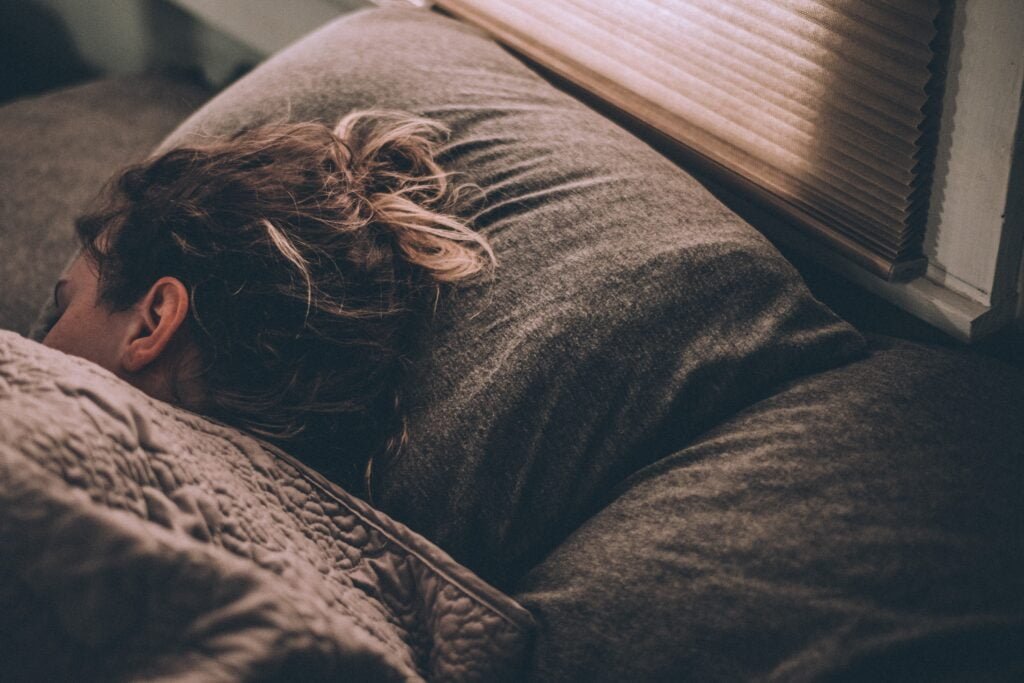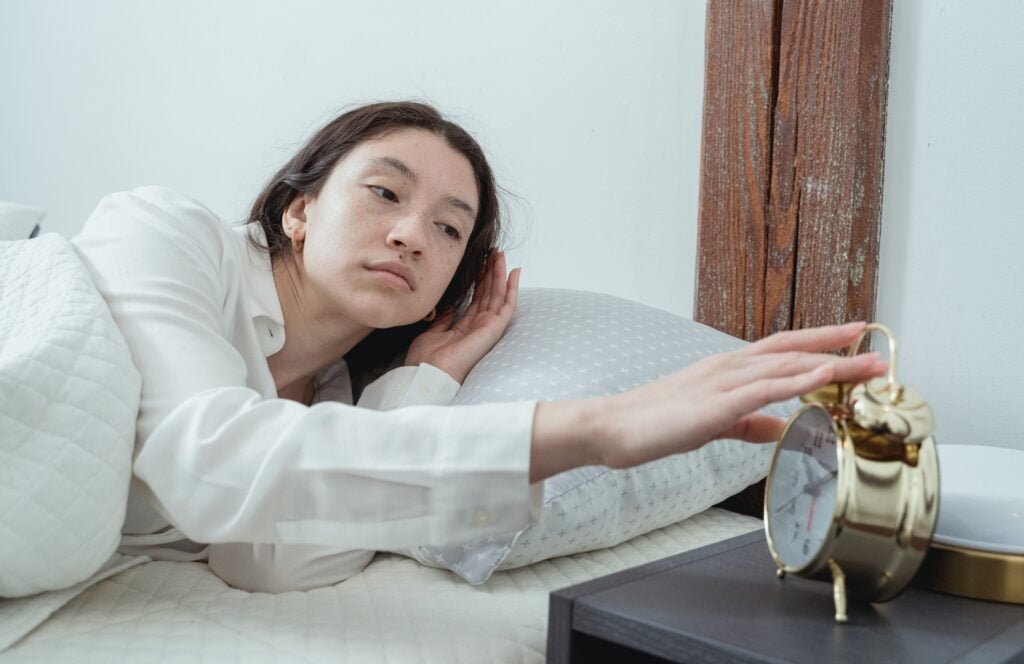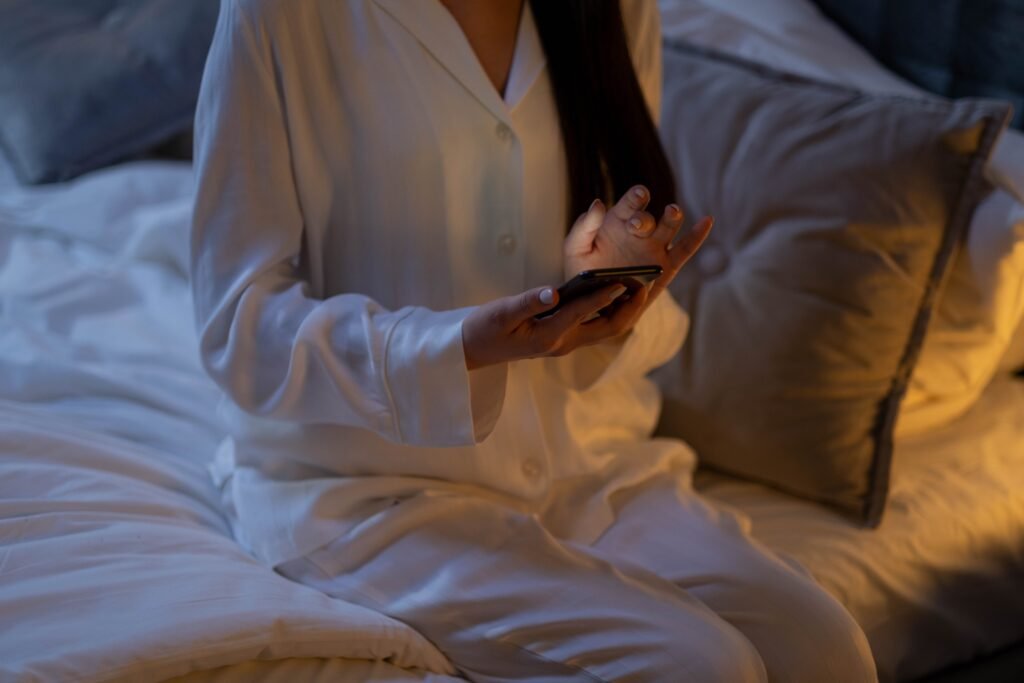The Wake-Back-To-Bed (WBTB) technique is a powerful, time-tested approach to induce lucid dreams.
This method works by capitalizing on the body’s natural sleep cycles. It involves waking up from sleep, staying awake for a short period, and then going back to sleep.
Some detractors claim that the Wake-Back-To-Bed is unadvisable due to the fact that it disrupts sleep. While systematically and intentionally disrupting your sleep over long periods of time may be harmful, leveraging WBTB the nights where you happen to wake up too early is not.
The simplicity of WBTB makes it accessible to dreamers at all levels, and this technique has an added advantage of increasing the vividness and length of lucid dreams.
How to get started with Wake-Back-To-Bed (WBTB)
Getting started with WBTB is an exciting experience. You won’t need any special tools or accessories, and you can seamlessly integrate it into your daily routines.
All you need is dedication, patience, and a clear understanding of the steps involved.
Let’s go through the steps that make up the WBTB method.
Step 1: Define your sleep schedule

The first step of the WBTB method has to do with your sleep schedule. You need to find a sleep cycle that supports your lifestyle and stick with it. A regular sleep schedule conditions your mind for lucidity.
Aim for at least six hours of sleep per night, but more importantly, ensure your sleep times are consistent.
Step 2: Wake up mid-sleep

The second step is waking up around 4-6 hours after falling asleep. This is when the most vivid of dream phases (REM phase) peaks. Exiting from sleep during this period can heighten your existential awareness in subsequent dreams.
Feel free to experiment with different wake-up timings to discover what works best for you.
Step 3: Stay awake for a brief period
Once you wake up, remain awake for a short while – typically between 15 to 60 minutes. This interval helps to attain a heightened level of awareness and recall that is necessary for lucid dreaming.
During this time, you can perform activities that trigger wakefulness like reading, but avoid high energy or light-intensive activities that could make it difficult for you to go back to sleep.
If you are thinking about using your phone during this period – I recommend against it. The blue light emitted from phones has been shown to lead to significantly decreased sleepiness.

Step 4: Induce lucidity
After the short period of wakefulness, return to sleep. As you lay down, focus on your intention to lucid dream. Visualization exercises can be highly helpful here.
Imagine yourself in a dream, becoming aware that you are dreaming. Cultivate this mental imagery over and over as you fall asleep.
This programs the subconscious mind to induce a state of lucidity in your dreams.
Questions about WBTB
Understanding your sleeping cycles is crucial for the WBTB technique because it helps you estimate your REM stage, a phase of sleep where dreaming is more intense. Waking up during this phase and then going back to sleep increases the probability of achieving a lucid dream.
The ideal time to wake up for WBTB is toward the end or after one of your REM sleep cycles. Since everyone’s sleep cycles are slightly different, this can vary but most common times are either around 4.5 to 6 hours into sleep.
Yes, you can adjust the wake period during the WBTB process if you find it hard to fall back asleep. If you’re one of those people who struggle to sleep after awakening, try to minimize your waking period, perhaps even as short as a few minutes. However, if you can manage to stay awake comfortably without affecting your sleep afterwards, an awake time of 20-40 minutes or up to an hour can potentially increase your chances of achieving lucidity.
The reasoning behind staying awake longer during the WBTB process is that it enhances the alertness of your mind, which can result in a higher chance of achieving lucidity when you return to sleep. You should balance this with the ease of falling back asleep; staying awake longer can make it more difficult to return to sleep.
Waking up the middle of the night to practice WBTB is not bad for you if done in moderation. However, systematically and intentionally disrupting your sleep nightly, and over long periods of time can be harmful.
Related techniques
- Mnemonic Induction of Lucid Dreams (MILD) – This technique involves rehearsal of dreams and setting intentions before sleep. Like WBTB, it takes advantage of the increased REM sleep that occurs in the latter part of the night.
- Wake Initiated Lucid Dream (WILD) – The WILD technique involves maintaining consciousness while your body transitions to a sleep state. This is often used in conjunction with the WBTB method for better results.
- Finger Induced Lucid Dream (FILD) – In the FILD technique, a person rhythmically moves his finger while transitioning from wakefulness to sleep, keeping the mind focused and lucid throughout the process.
Getting started with Wake-Back-To-Bed (WBTB) tonight
Initiating your WBTB journey is surprisingly straightforward. Start by setting a fixed sleep schedule.
Tonight, set an alarm for 6 hours after your estimated time of sleep.
When the alarm rings, spend some time awake doing a low-intensity activity.
After that, go back to bed with the intention of having a lucid dream. Let the seamlessness of the WBTB method pave the way for your first venture into the thrilling world of lucid dreaming.
